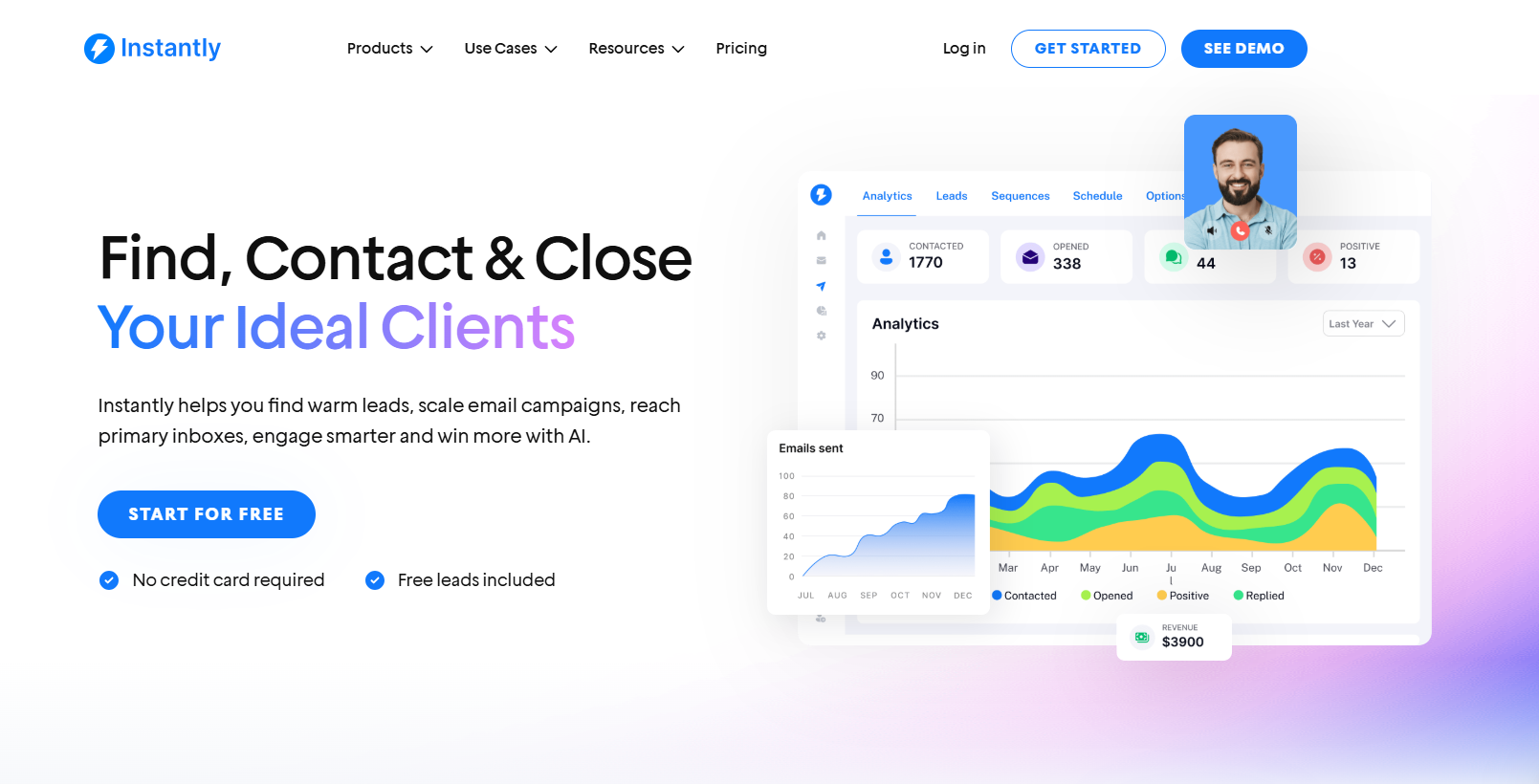Many sales reps claim that revenue is the only metric that matters. And sure, if we’re viewing it from a vacuum, that makes sense—revenue is the end goal. But when you zoom out, modern sales operations involve many moving parts.
With most businesses relying on multiple revenue streams, it’s not just about how much money comes in. It’s about where that money comes from, how it’s generated, and how efficiently each channel performs.
That’s when you start looking at sales metrics and KPIs. They help break down performance by channel, activity, and strategy to determine what’s working, what’s not, and where your sales team needs to double down. This article breaks down 16 vital sales metrics and KPIs to keep tabs on for better business outcomes.
The Importance of Sales Metrics and KPIs to Revenue Growth
Sales performance management requires more than gut instincts and end-of-month numbers. You need a clear, data-driven view of how strategies impact revenue, and that’s precisely what sales metrics provide.
These metrics give measurable, objective insights into performance across your team, pipeline, and customer journey. When used correctly, they tell you where you’ve been and help you decide where to go.
However, sales leaders can’t just twist data to support a narrative. It’s tempting to cherry-pick data to make things look good, but that approach only stalls growth. The most successful sales leaders use KPIs to reveal hard truths, adjust tactics, and align teams.
With that out of the way, let’s go over the most important sales metrics and KPIs to track and measure for meaningful sales insights and better performance across the board.
Lead Generation Metrics
Lead generation strategies directly affect revenue growth. These metrics gauge how efficient you are at acquiring leads and how well you can convert them into sales opportunities.
Cost Per Lead (CPL)
The cost per lead (CPL) is the average marketing and sales cost of acquiring one quality lead. You can calculate it by dividing the total lead-gen spend by the number of leads. CPL varies between industries and strategies. You can compare CPL directly against your acquisition channels or industry averages to give sales teams direction.
Lead Conversion Rate
If out of 1,000 leads, 100 become customers, you have a conversion rate of 10%. Ideally, you’d want to have high lead conversion rates for every strategy. However, strategies like cold sales emails rely on volume and list quality. You could have low CPL and 1-5% conversion rates and still get more ROI compared to other channels like social media.
Lead Velocity Rate (LVR)
To grow revenue, you need to grow your pipelines. To measure pipeline growth, you look at the lead velocity rate. It shows how fast your lead generation is scaling month-over-month.
Calculation: ((Leads this month – Leads last month) ÷ Leads last month) × 100.
For example, a 20% LVR equals a fast-expanding funnel. Consistently positive LVR indicates healthy growth, whereas a flat or negative LVR flags stagnation in demand generation.
B2B Sales Email Marketing KPIs
Email marketing should be a vital channel in your overall sales strategy, whether you’re doing nurturing, cold sales, or warm outreach. Here are the key email marketing KPIs to focus on:
Open Rate
Open rates are the percentage of emails you send that recipients open. High open rates mean your emails are engaging, which has much to do with your subject line, personalization, and email deliverability. But opening an email isn’t enough—prospects must also engage with it.
Click-Through Rate (CTR)
Click-through rates are the percentage of prospects who click a link in your email. This shows how engaging, relevant, and valuable your content is. Statistics say the average CTR across industries is between 2% and 5%. You can improve this by optimizing CTAs and closing lines.
Reply Rate (Response Rate)
Outbound strategies, like cold sales emails, aim to get a positive reply from prospects. On average, B2B businesses get around 5% reply rates, which vary per industry. Consider using a cold sales follow-up template if you want higher reply rates.
Bounce Rate
Every email marketing campaign needs high deliverability. Even the best sales pitches are essentially useless if the email lands in spam. Both hard and soft bounces should be lower than 1%. Ensure you have a proper email structure and a validated, quality lead list to reduce your bounce rates.
Pipeline Management KPIs

Pipeline management KPIs focus on managing sales opportunities in your funnels. They ensure you have a sustainable pipeline to meet targets and identify bottlenecks in the sales process:
Pipeline Value
Most sales CRMs can forecast the potential revenue in your pipelines. Sales reps can also examine each prospect's deal size to determine who to focus on first. Pairing deal size with intent data lets reps focus on high-value, sales-ready targets.
Pipeline Coverage (Pipeline-to-Quota Ratio)
Pipeline coverage is the ratio of the pipeline value to your sales target or quota. Many B2B sales teams use a 3:1 or 4:1 coverage ratio. That means having three to four times your quota in your pipelines (it’s unrealistic to assume each opportunity inside your CRMs would convert).
Sales Cycle Length
The sales cycle length is the average time from first contact to closing (won or lost). A shorter sales cycle means your team converts deals faster. B2B sales cycles can range from a few weeks (for lower-priced or transactional sales) to months for enterprise deals. Tracking this helps identify bottlenecks in the sales process and lets you roll out solutions quickly.
Sales Performance & Conversion KPIs
Sales performance metrics measure the outcomes of the sales team’s efforts—how many deals are closed, how much revenue is generated, and how effectively the team turns opportunities into wins:
Win Rate (Deal Conversion Rate)
This is the percentage of opportunities closing as “won” deals. It’s calculated as (Number of deals won/Number of total opportunities) × 100. For example, winning 30 out of 100 opportunities equals a 30% win rate.
Something to note is that win rates vary by deal size and industry. Healthy win rates float around 20%-30% for mid-market B2B sales but can be lower (5–10%) for large enterprise deals. If your win rate is below industry norms, there might be issues with lead quality, sales skills, or offers.
Average Deal Size
The average revenue per closed deal is computed by dividing total revenue by the number of deals closed in the period. Monitoring the average deal size helps in forecasting and targeting. You can increase the average deal size by upselling or focusing on bigger prospects.
Total Sales Revenue
The total value of sales closed in the period (sometimes called bookings) is the bottom-line outcome of your sales strategies. This metric can also be segmented. For example:
- New customers vs renewals
- Products vs products
- Social media marketing vs. cold email outreach
The ultimate goal is hitting or exceeding the revenue target—all other KPIs should work toward improving this metric. Tracking the essential sales metrics and KPIs helps you trace back, troubleshoot, and refine strategies.
Customer Retention & Expansion KPIs
It’s more profitable to nurture and support existing customers than to acquire new ones. That’s why the sales process doesn’t stop once you land a deal. These KPIs measure how well you retain customers and expand account value over time:
Customer Retention Rate
This is the percentage of customers you retain over a given period. The formula for calculating customer retention is: ((# of customers at the period end – # of new customers) / # of customers at the start) × 100.
A high retention rate (close to 100% for the period) means most customers stay with you. This is a critical metric because retaining clients is often more cost-effective than finding new ones.
Retention will vary by industry and contract model, but many B2B companies aim for annual retention rates in the 85%-95%+ range (or churn under 5–15% annually).
Recurring Revenue and Renewal Rate
High renewal rates indicate strong loyalty and satisfaction toward your products or services. This is often tracked in recurring payment-based businesses like SaaS subscriptions or agencies. You can track Monthly Recurring Revenue (MRR) or Annual Recurring Revenue (ARR).
Customer Lifetime Value (CLV or CLTV)
CLTV is the total revenue or profit expected from a customer over the entire duration of their relationship. It can be calculated in various ways; one common approach is to use the Average revenue per customer × Average customer lifespan (in years) for a rough estimate.
An excellent strategy for using CLTV is pairing it with acquisition cost data to ensure long-term profitability. For example, if your average CLTV is $5000, spending $1000 to acquire that customer might be reasonable, but $4000 would be unsustainable.
Key Takeaways

Sales metrics and KPIs aren’t just numbers in a dashboard. They give you data-driven insights on how to improve your overall sales strategy, performance, and revenue. To recap, here are the sales metrics every business should look into:
- Lead generation metrics: CPL, lead conversion rates, and lead velocity
- B2B sales email marketing KPIs: Open rates, CTR, reply rates, and bounce rates
- Pipeline management: Pipeline value, pipeline coverage, sales cycle length
- Sales performance and conversions: Win rate, average deal size, total sales revenue
- Customer retention: Retention rates, recurring revenue, customer lifetime value
Instantly.ai gives you all the tools to measure, track, and improve your sales and email campaign performance. Start scaling growth with data-driven email marketing—try Instantly for free today!




